Most Common Pests in Cannabis: Caterpillars
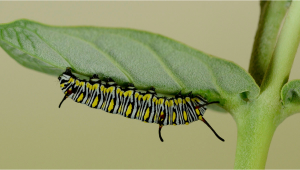
- 1. What are caterpillars?
- 2. The life cycle of caterpillars
- 3. How to identify a caterpillar invasion
- 4. How to get rid of a caterpillar pest in your cannabis plants
- 4. a. Removing the caterpillars by hand
- 4. b. Using insecticides to get rid of caterpillars
- 4. c. Attacking with nature: predator species come to rescue
- 5. How to prevent a caterpillar pest on cannabis plants
- 5. a. Other common pests for cannabis crops
- 6. The bottom line
Growing your own feminized seeds at home means you'll become some sort of expert in the field, whether that's the plan or not, given you'll need to learn a few basic things in order for your plant to survive. Any good cannabis grower is aware of at least a couple of growing tips and techniques, has an idea of timing concerning the plants' growing process, understands the basic nutrients 'diet' for them to be healthy, and is able to identify the different types of pests, which are no strangers to the process of cultivation.
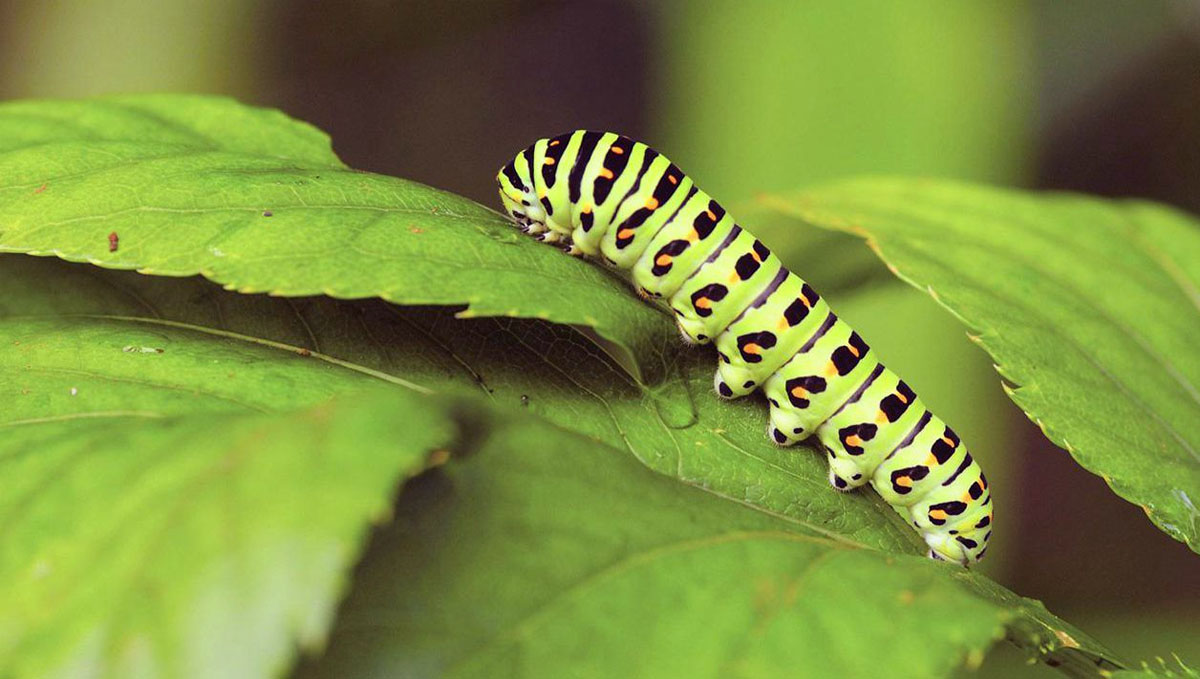
We know what you're probably thinking, damn did I get myself into trouble? don't worry, as much as it all may seem, all it takes is a few minutes to read until you master the essentials of each of these topics. And then, well just, practice makes perfect! Now, let's learn everything about one of the most common pests in cannabis plants, caterpillars.
1. What Are Caterpillars?
Caterpillars are insects in the larval stage of the Lepidoptera family, a.k.a, all moths and butterflies. Given there are around 180.000 species of butterflies spread all over the air around the world, there are indeed many types of caterpillars as well, varying in colors and sizes, but sharing some characteristics as well.
The common characteristics among these soft body insects include:
- Having a segmented body in three parts: head, thorax, and abdomen;
- A maximum of 6 pairs of legs, plus their hooks and false legs;
- An exoskeleton, (Call of Duty Advanced Warfare) which means they have an external skeleton;
- Twelve stemmata, six simple pairs of light-sensitive eyes arranged in a curved row.
Although these little insects are quite small and seem indefensive, the bastards can be extremely ambitious and will eat out everything that comes their way, and that everything includes attacking every single part of your cannabis plants until they break down. These guys start by eating up at the inner core of the stalk, leading to cankers forming in the stems. When a plant is extremely infected with the pest, it could and will break down. So if you've seen beautiful butterflies flying around your house and garden then snap out of the rose-colored glasses, it's time to fight some pests before it's too late!
2. The Life Cycle of Caterpillars
As you may know, caterpillars are butterflies that have not transitioned yet so before learning how to identify and deal with caterpillars, let’s learn a bit more about their life cycle.
Egg Phase
The first phase or stage of a caterpillar’s life cycle is the egg phase. Eggs are laid by adult butterflies on plants, which will become the food for the caterpillars once the eggs hatch. Eggs are usually laid during all seasons except winter but this depends on the specific species of butterfly.
Caterpillar Phase
Once the eggs hatch, the next stage is the larva stage which in this case they’re called caterpillars. All caterpillars do is eat, this is why they’re a huge deal for cannabis growers as they will eat the leaves and buds in order to grow, and can grow 100 times their size during the caterpillar stage.
Pupa Phase
Once the caterpillar has shed 4 to 5 times and it’s full-grown it will stop eating and enter the pupa stage, which for butterflies it’s called a chrysalis. During this phase, caterpillars make a cocoon out of silk and will either be suspended under branches, hidden in leaves, or buried underground, depending on the species. The pupa stage can last anywhere from a couple of weeks to a couple of years, during this period they will grow legs, wings, eyes, and every other part of the butterfly.
Butterfly
Once the adult butterfly is completely formed, the cocoon will eventually open and the adult butterfly will come out flying looking for a plant or place to lay eggs, and the cycle repeats again. Now that you know the life cycle of caterpillars, it’s easier to know how to deal with them. As you’ve read, adult butterflies can lay eggs on cannabis plants so make sure to take preventive measures in order to avoid having all your cannabis plants filled with caterpillars!
3. How To Identify a Caterpillar Invasion
In order to prevent any major harm from happening to your cannabis plants, you'll need to be able to identify the caterpillar pest as soon as possible. Let's get into the biggest signs and symptoms of a caterpillar infection in cannabis plants.
| Symptom | Details |
|---|---|
| Holes and bite marks on leaves | If you've noticed some strange, irregular holes on your plants' fan leaves, the odds are that some daring caterpillars have started to feed off them. The holes can go from millimeters-small to even centimeters-big. |
| Eaten buds | Did you just hear that? It's the sound of a grower's heart breaking as he found that these evil devils have been eating out their precious flowers. Resin and phytochemicals? A gourmet dish for these intruders. Normally they're located in the base of the sprout and if not attended they could end up killing your bud. |
| Damage on the stems |
Some species of caterpillars aim at the stems and branches of your plants, eating the inner white flesh, creating a hole through the structure of your babies, which could severely affect them. |
| Leaves turning yellow | Although yellowish leaves can be a sign of many plant illnesses, it is a normal sign that the nutrients aren't flowing well through the plant, which means that there are some other issues taking place, such as a caterpillar attack. |
| Slowed growth | When caterpillars have affected your plant, since your plant will be stressed trying to fight them, a slowed growth isn't abnormal. Nutrients can't get to travel as easily, weakening your plant's ability to grow. Just like humans will look weaker under bad nutrition, so will an infected cannabis plant. |
Now that you know how to identify the most evident signs of a caterpillar pest in your cannabis plants it's time to learn how to get rid of them.
4. How To Get Rid of a Caterpillar Pest In Your Cannabis Plants
When it comes to marijuana plants, the number one duty of a cultivator is being attentive and carrying through daily checks to be able to spot any misfortunes before it's already too late. Therefore, to get rid of a caterpillar pest, in the first instance, you should try to prevent them.
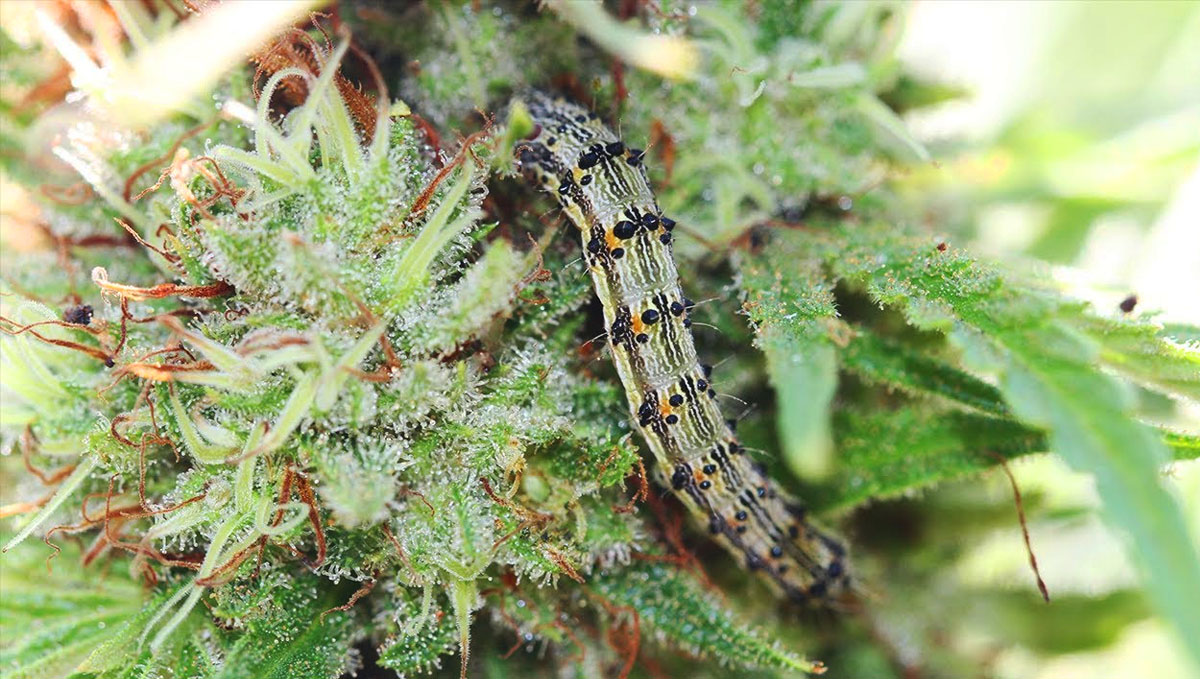
However, just like we can't avoid accidents from happening, if we could predict a pest everything would be so much easier, although this isn't the case most of the time. This is especially true for outdoor cannabis plants, which don't indulge the luxury of an enclosed microhabitat such as indoor plants.
So, if it turns out you've found some signs of a caterpillar attack in your baby greens then it's time to get into action, asap!
Removing the Caterpillars by Hand
One of the easiest ways to get rid of the caterpillars attacking your Mary J's is removing them yourself by hand. Since these guys are quite visible, even more so the bigger ones, taking them out by hand isn't too hard to do. Chuck on a couple of gloves along with a handful of patience and try to remove all of the caterpillars in your plants.
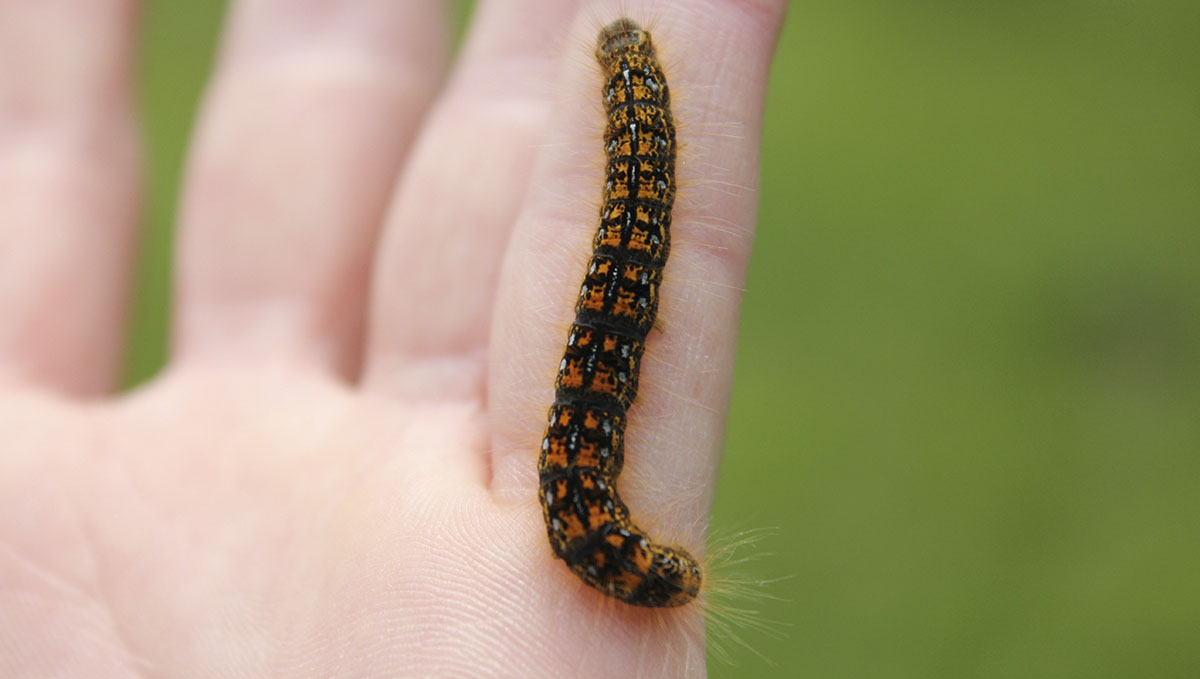
Keep in mind that some of these species like to emerge during nighttime so get ready to check for them in the after hours. Besides this way you don't necessarily kill the insects, revenge isn't healthy folks, you can replace them somewhere else and allow them to finally turn into beautiful flying beings.
Using Insecticides to Get Rid of Caterpillars
While removing the caterpillars by hand can be helpful, you could still need some extra assistance for targeting the problem. At this point, you can turn to insecticides to make sure you get rid of these larves fast and 100% assured. Some might rather turn to natural options for insecticides and make their own homemade ones. A couple of effective insecticides combine a blend of garlic and pepper; or using pyrethrum, a species from the daisies family, and rotenone.
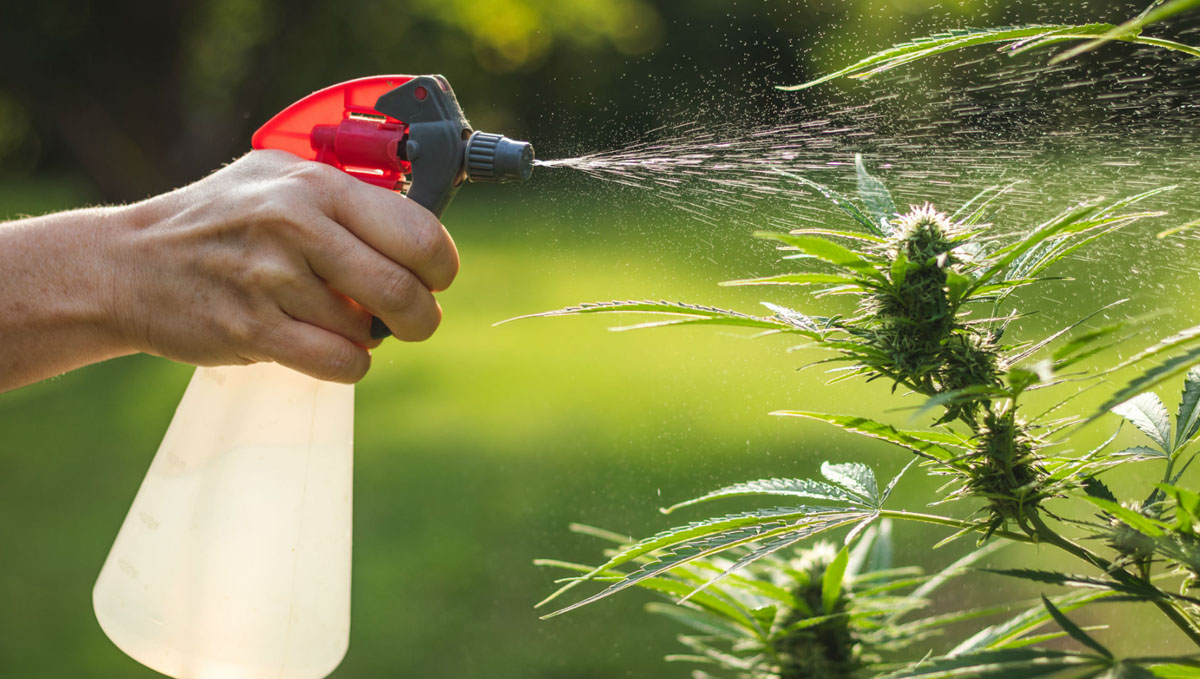
If you don't want to take any chances, then you should definitely turn to Bacillus thuringiensis. Bacillus is a biological insecticide that acts upon contact, meaning that caterpillars will fall ill and die as fast as they get into touch with the product, sad face.
Important AdviceAlthough Bacillus is a biological product, you should still be careful and refrain from using it when your plant has reached the last 15 days of its growth cycle.
Since we want the plants to stay healthy and fit, try not overwhelming them with the product, a combination of this spray along with manual removal is the best way to go.
Attacking with Nature: Predator Species Come to Rescue
While you could indeed come to save the day by putting in the dedication to remove every caterpillar by yourself, why do it when you can get your own security system of predator species to do the job for you? Nature has thought about it all before we could even conceive the idea. We all know of this ecological pyramid where some beings are meant to eat others, and so on. Well, caterpillars can't escape this either. Here come the parasitic wasps and praying mantises.
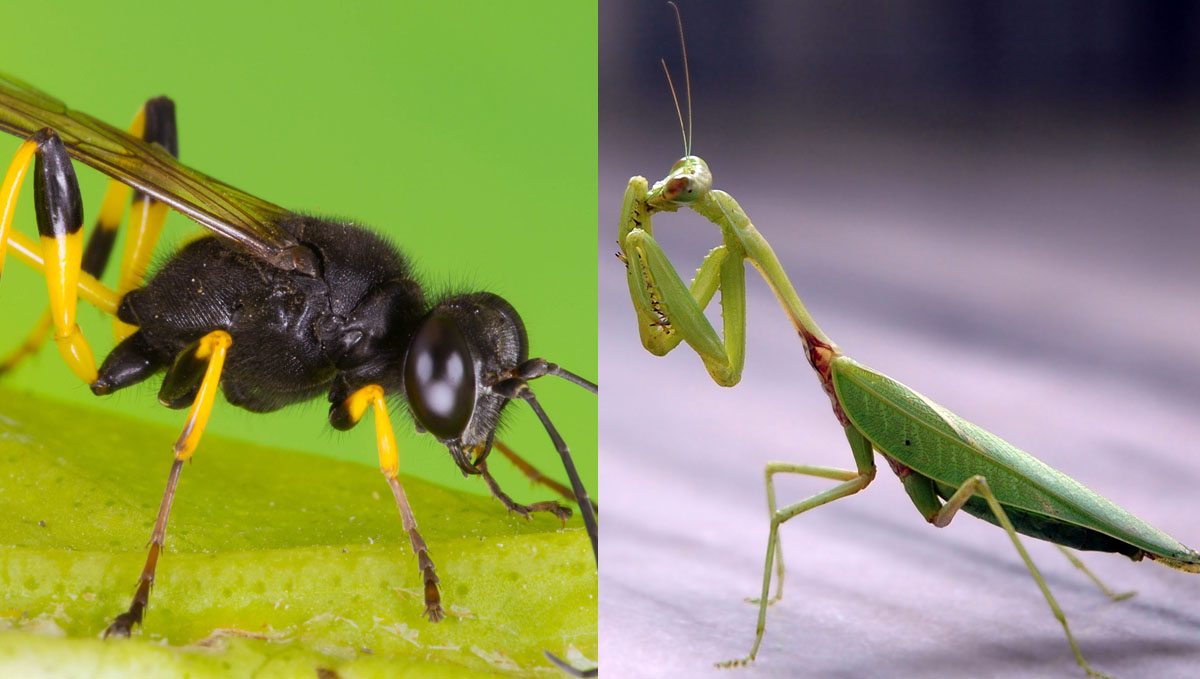
The first ones attack caterpillars to later lay their eggs in their bodies, yikes. The latter, these little green ninjas, hide among the leaves, flowers, or stems and wait for the prey to make a move before they make the attack, effectively getting rid of the caterpillar pest.
5. How To Prevent a Caterpillar Pest on Cannabis Plants
As we've mentioned above, the first step to preventing a caterpillar pest on your weed plants, you should keep an attentive state concerning your plants, and check them thoroughly on a daily basis. If you've noticed several butterflies surrounding your cannabis garden, it's time to get into action. Now, since checking will only work but for identifying the pest at an early stage, what you need is to do is prevent it in general. There are a couple of handy friends you can use for this. Neem oil, for instance, is a great natural pesticide that will target not only caterpillars but many more potential threats. The predator insects mentioned before will also do the job, and if you simply don't want to risk it, you could set a transparent, tulle-like net evolving the plant to keep all insects out.
Other Common Pests for Cannabis Crops
As you can see, caterpillars can be an absolute nightmare for cannabis crops, especially outdoor ones. But they are a far cry from the worst pests that can, and do, affect both indoor and outdoor cannabis crops. Let's have a look at some of the other frequently seen pests, and how to best treat each.
Spider Mites
In most parts of the world, the most commonly seen pests for cannabis are the dreaded spider mite. Miniscule to the point of almost being invisible to the naked eye, these mites are voracious predators and can do massive amounts of damage to a crop in very little time. Some obvious signs that you might be dealing with spider mites are very fine webbing around the fan leaves, a noticeable yellowing or browning of the newer fan leaves, and in more developed cases, a very strong acrid smell coming from the plants. Spider mites start out as tiny, see-through, pale green bugs that morph into slightly (but only very slightly) larger insects with green stripes.
You will need a magnifying glass to identify spider mites. The best way to deal with spider mites is to give them a solid spray with neem oil. you want to saturate the plants and be sure to cover the entire plant structure including the underside of the fan leaves. If your plants have already started to properly flower then hope and pray that they haven't found their way into the buds themselves, as you really shouldn't spray any insecticide on the flowers.
Mealy Bugs
Mealybugs can be another big problem when it comes to cannabis crops. These bugs love to suck the sap out of the plants and live in any area that gets warm and humid. Mealybugs are easily identifiable, as they look like small white fluffs with legs. They can be found most commonly around the fan leaves, and in some cases, they will even take up residence inside the buds themselves.
The best form of treatment is with a mix of isopropyl alcohol, water, and dish soap. The exact ratios vary depending on the severity of the infestation, but usually, a mix of 10 parts water, to 1 part dish soap, and 2 parts alcohol should be enough for a single spray. This can be sprayed directly onto the mealy bugs and, if the infestation is serious enough, it can be used to cover the whole plant.
Aphids and Whiteflies
Aphids and whiteflies can be a huge problem in certain climates, particularly during hot and humid summers. While not the same pest, both of these bastards suck out sap from the plants and can do a great deal of damage to both indoor and outdoor cannabis crops. Aphids are easily identifiable as they look like small green or black flying bugs (almost like miniature mosquitoes), and whiteflies look like small white moths. The best way to get rid of both of these pests is with a strong blast of water from a garden hose, or if the infestation is more serious, by spraying them with neem oil or a mixture of rubbing alcohol, water, and dish soap.
Fungus Gnats
Unlike the previously discussed pests, fungus gnats are very hard to identify - a least, during the first stage of their lifecycle, which is when they are at their most devastating to the plant. Fungus gnat larvae thrive in overly humid conditions and live in the soil or coco mix where they directly attack the roots. These larvae look like small white worms, but the adults look more like mini fruit flies. The problem is, once you notice the adult version buzzing around, the infestation has most likely already taken hold in the substrate.
The best way to get rid of fungus gnats is to keep your humidity levels in check, and then spray the soil with a mixture of hydrogen peroxide, water, and dish soap. This will kill the larvae, but you also need to prevent any more eggs from appearing by decreasing humidity and improving ventilation. The most common cause of fungus gnat issues is overwatering, or not letting the medium dry out between waterings.
6. The Bottom Line
It is most likely that a caterpillar pest will not kill your cannabis plants, however, it is indeed possible for this to happen. You would just have to be an extremely careless cultivator not to notice such pests. Therefore, the best advice anyone could give you is to show your plants some love and care and actually put the effort into maintaining their health. After all, if you're going to commit to growing your own weed for a couple of months period, then wouldn't you want the results to be great? Well, buddy, great isn't a gift from the gods but a result of hard work. We hope you can get rid of these sneaky caterpillars fast and that you can happily continue with your cannabis cultivation journey!










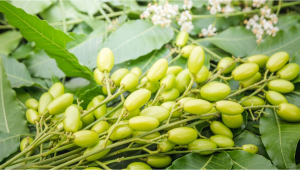
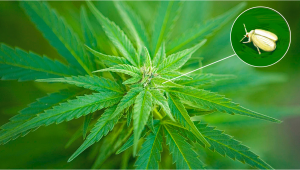
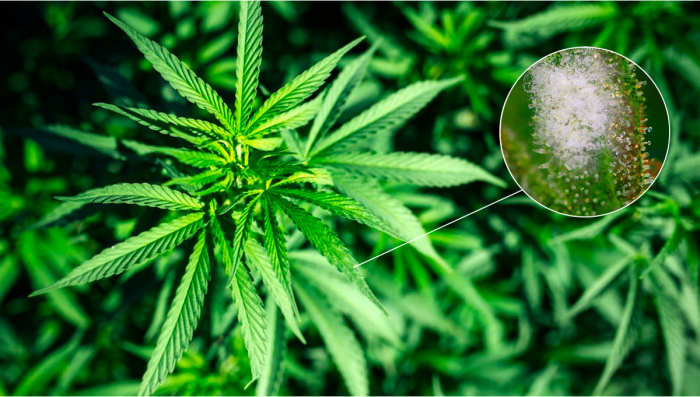
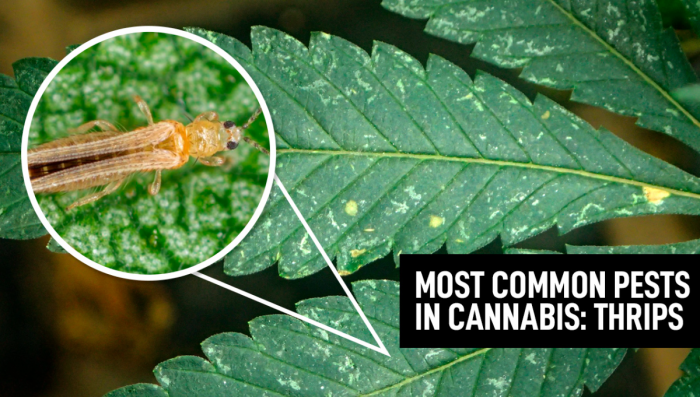
Comments